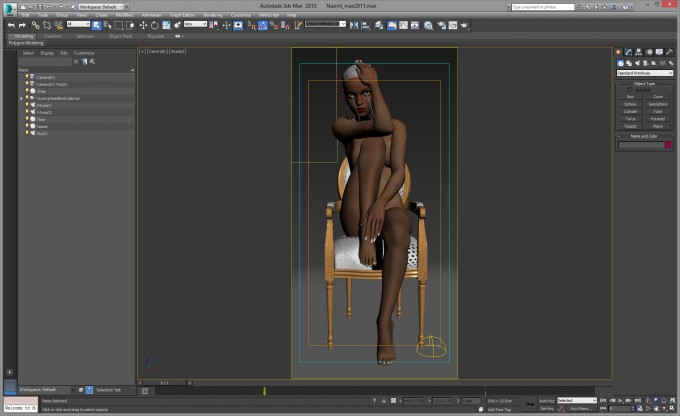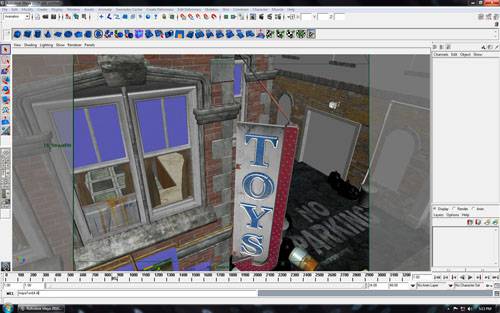- Qualcomm Launches Snapdragon 4 Gen 2 Mobile Platform
- AMD Launches Ryzen PRO 7000 Series Mobile & Desktop Platform
- Intel Launches Sleek Single-Slot Arc Pro A60 Workstation Graphics Card
- NVIDIA Announces Latest Ada Lovelace Additions: GeForce RTX 4060 Ti & RTX 4060
- Maxon Redshift With AMD Radeon GPU Rendering Support Now Available
Core i7-5960X Extreme Edition Review: Intel’s Overdue Desktop 8-Core Is Here

In late 2011, I wagered that Intel would follow-up its i7-3960X with an eight-core model within the year. That didn’t happen. Instead, we have had to wait nearly three years since that release to finally see an eight-core Intel desktop chip become a reality. Now for the big question: Was the company’s Core i7-5960X worth the wait?
Page 3 – Workstation: Autodesk 3ds Max & Maya
If there’s design work that needs to be done, then Autodesk is sure to have the right tool. From 3D modeling to architectural design, Autodesk’s selection of highly-regarded tools is almost mind-numbing, and because both its 3ds Max and Maya applications have long been considered to be some of the best in their respective class, we opt to use them for our benchmarking here.
For the sake of all-around testing, we perform most of our benchmarking on this page with the help of SPEC’s SPECapc 3ds Max 2015 and SPECapc Maya 2012, although we also render an in-depth model/scene in the former. We’ll explain each benchmark as we go along.
SPECapc 3ds Max 2015
We kick off our testing with one of the most comprehensive benchmarks in our test suite: SPECapc 3ds Max 2015. The overarching goal of those responsible for producing SPEC’s benchmarks is to deliver as well-rounded a test suite as possible for a respective field, such as 3D rendering and modeling, to produce accurate results that those responsible for purchasing hardware can take advantage of.
Designed to utilize both the CPU and GPU, SPECapc 3ds Max 2015 comes in both free and professional flavors, with the latter being the version we use. It’s comprised of 48 individual tests and takes a couple of hours to complete on a high-end machine.
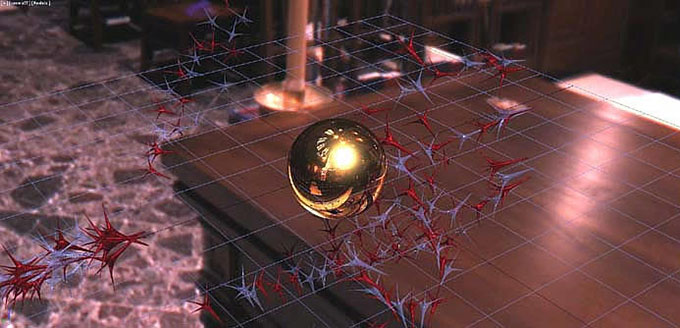
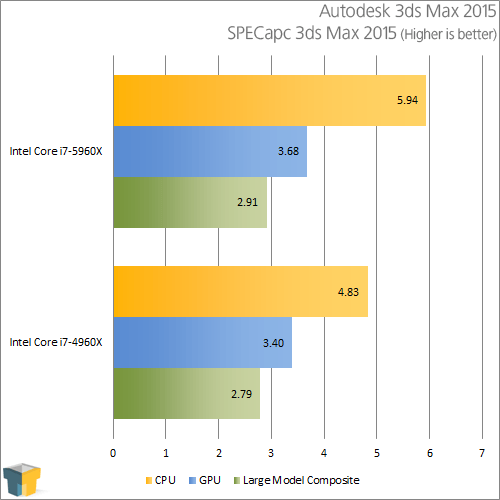
Considering the fact that the i7-5960X has a +33% core advantage, we’re likely to see similar gains in most benchmarks that can take proper advantage of all of its cores – but taking into account its 3.0GHz clock speed. With a 22% boost in this particular benchmark, we can see some proof of that theory.
Autodesk 3ds Max 2015 – “Naomi” Render
For our second 3ds Max 2015 test, we render a scene commissioned from Bulgarian artist Nikola Bechev, entitled “Naomi: The Black Pearl”. The woman is comprised of over 7,000 polys with the entire scene totaling just over 106,000 vertices. Three light sources are used, with the entire scene being enhanced with HDR and ray tracing techniques, and subsurface scattering applied to certain objects. The scene is rendered at 1800×3600 as a production release, with HQ detail levels being used all-around.
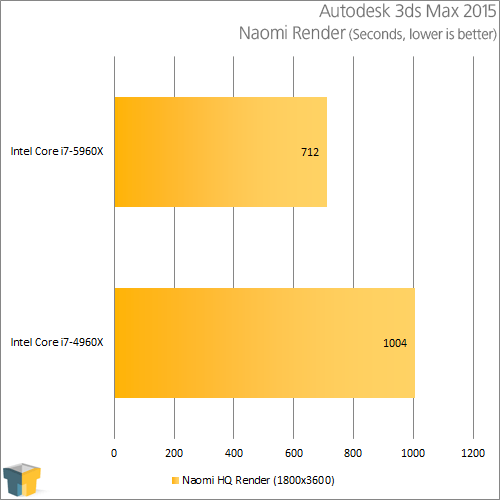
The i7-5960X impresses a bit more in our real-world test than it did in SPEC’s apc test, rendering Naomi 28% faster. Had the eight-core been clocked like the six-core, we would have undoubtedly hit that 33% mark.
SPECapc Maya 2012
Like its 3ds Max 2015 variant, SPECapc Maya 2012 is designed to stress various aspects of the tool, such as rendering with standard and HQ methods, working in wireframe mode and so forth across numerous models and one overarching scene titled “Toy Store”.
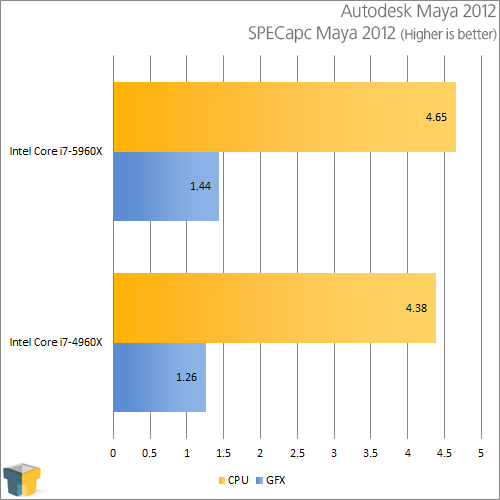
Interestingly, it was the GFX score that saw the greatest boost here, despite the fact that the same graphics card was used. On the CPU side, the gain was about 6%, which might say more about this being an outdated benchmark than the i7-5960X failing to offer Maya users a proper boost.
Support our efforts! With ad revenue at an all-time low for written websites, we're relying more than ever on reader support to help us continue putting so much effort into this type of content. You can support us by becoming a Patron, or by using our Amazon shopping affiliate links listed through our articles. Thanks for your support!




